| Listing 1 - 10 of 55574 | << page >> |
Sort by
|
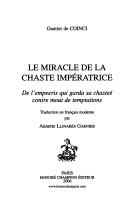
ISBN: 9782745314161 2745314165 Year: 2006 Volume: 75 Publisher: Paris : Honoré Champion,
Abstract | Keywords | Export | Availability | Bookmark
 Loading...
Loading...Choose an application
- Reference Manager
- EndNote
- RefWorks (Direct export to RefWorks)
Le thème de la femme chaste de ce miracle remonterait au Soukasaptati. Avec l'éclosion du culte de la Vierge au XIIe siècle, l'apologie de la chasteté est un thème fécond. L'Impératrice, parée de toutes les vertus, se trouve plongée dans un monde courtoismais néanmoins masculin. Après le départ de son époux en pèlerinage, sa condition d'Impératrice ne la protège pas des assauts de ses soupirants. Attachée à sa chasteté, elle se refuse à eux. Pleins d'orgueil, ils en conçoivent les pires vengeances et la vouent aux avanies les plus inhumaines. Par deux fois elle est condamnée à mort, et ne devra son salut qu'à la Providence et à laVierge dont elle deviendra la médiatrice. Enfin selon ses vœux, elle se retirera dans un cloître pour élever son âme vers Dieu, non sans avoir exprimé devant son époux ses griefs à l'encontre des hommes.
Mary, --- In literature --- In literature.
Book
Year: 1998 Publisher: Cambridge New York Melbourne Cambridge University Press
Abstract | Keywords | Export | Availability | Bookmark
 Loading...
Loading...Choose an application
- Reference Manager
- EndNote
- RefWorks (Direct export to RefWorks)
Work in literature --- Occupations in literature --- Women in literature --- Home in literature --- Domestic relations in literature

ISBN: 3518414542 9783518414545 Year: 2003 Publisher: Frankfurt am Main Suhrkamp
Abstract | Keywords | Export | Availability | Bookmark
 Loading...
Loading...Choose an application
- Reference Manager
- EndNote
- RefWorks (Direct export to RefWorks)
Collection of previously published texts about Switzerland from various works by Robert Walser.
German literature --- Switzerland --- In literature --- In literature. --- Switzerland - In literature
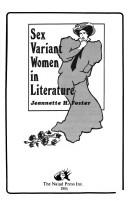
ISBN: 0930044657 Year: 1985 Publisher: Tallahassee (Florida) : Naiad Press,
Abstract | Keywords | Export | Availability | Bookmark
 Loading...
Loading...Choose an application
- Reference Manager
- EndNote
- RefWorks (Direct export to RefWorks)
Fonds Suzan Daniel (FSD)
Lesbians in literature. --- Sex in literature. --- Women in literature.
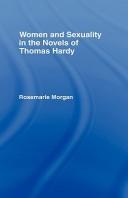
ISBN: 0415002680 9780415002684 Year: 1988 Publisher: London Routledge
Abstract | Keywords | Export | Availability | Bookmark
 Loading...
Loading...Choose an application
- Reference Manager
- EndNote
- RefWorks (Direct export to RefWorks)
Women in literature. --- Sex in literature. --- Sex role in literature.
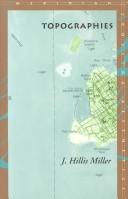
ISBN: 0804723796 Year: 1995 Publisher: Stanford (Calif.) : Stanford university press,
Abstract | Keywords | Export | Availability | Bookmark
 Loading...
Loading...Choose an application
- Reference Manager
- EndNote
- RefWorks (Direct export to RefWorks)
Geography in literature. --- Geography in literature --- Topography in literature
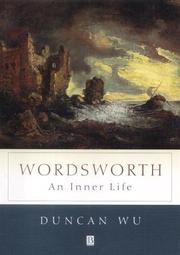
ISBN: 0631206388 Year: 2002 Publisher: Oxford Blackwell
Abstract | Keywords | Export | Availability | Bookmark
 Loading...
Loading...Choose an application
- Reference Manager
- EndNote
- RefWorks (Direct export to RefWorks)
Psychology in literature. --- Self in literature. --- Spiritual life in literature.
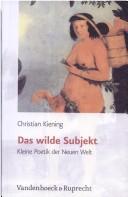
ISBN: 9783525367094 3525367090 Year: 2006 Publisher: Göttingen Vandenhoeck & Ruprecht
Abstract | Keywords | Export | Availability | Bookmark
 Loading...
Loading...Choose an application
- Reference Manager
- EndNote
- RefWorks (Direct export to RefWorks)
Exoticism in literature. --- America --- In literature. --- Exoticism in literature
Book
ISBN: 9781138121331 1138121339 9781315650968 9781317308607 Year: 2017 Volume: 17 Publisher: London ; New York : Routledge,
Abstract | Keywords | Export | Availability | Bookmark
 Loading...
Loading...Choose an application
- Reference Manager
- EndNote
- RefWorks (Direct export to RefWorks)
The 9/11 attacks brought large-scale violence into the 21st century with force and have come to epitomize the entanglement of intimate vulnerability and virtual spectacle that is typical of the globalized present. This book works at the intersection of trauma studies, affect theory, and literary studies to offer radically new interpretive frames for interrogating the challenges inherent in representing the initial moments of the terrorist encounter. Beyond the paradigm of traumatic unspeakability, post-9/11 texts expose the materiality of the human body in its universal vulnerability. The intersubjective empathy this engenders is politically subversive, as it undermines the discourse of historical singularity and exceptionalism by establishing a global network of reference and dialogue. Innovative theoretical interconnections between clinical pathology, concepts of cultural trauma, and political aesthetics lay the foundations for exploring formally and geographically diverse texts. Close readings of works by Jonathan Safran Foer, Art Spiegelman, Don DeLillo, and William Gibson map the relationship between representations of 9/11 and complex aspects of trauma theory. This detailed approach makes a case for revisiting trauma theory and bringing its Freudian origins into the digitized present. It showcases trauma as a physical and psychological wound as well as an experience that is simultaneously pre-discursive and inhibited by the virtuality of the present-day real. Exploring how contemporary trauma studies can take into account the digitization and virtuality of present-day realities, this book is a key intervention in establishing a contemporary ethics of witnessing terror.
Book
ISBN: 0429023480 0429659873 0367086271 0429657439 9780429657436 9780429659874 9780429654992 0429654995 9780429023484 9780367086275 0367519895 Year: 2020 Publisher: London : Routledge,
Abstract | Keywords | Export | Availability | Bookmark
 Loading...
Loading...Choose an application
- Reference Manager
- EndNote
- RefWorks (Direct export to RefWorks)
This book uses the conceptual framework of animism, the belief in the spiritual qualities of nonhuman matter, to analyze representations of trauma in postcolonial fiction from Nigeria and India. Toward an Animist Reading of Postcolonial Trauma Literature initiates a conversation between contemporary trauma literatures of Nigeria and India on animism. As postcolonial nations move farther away from the event of decolonization in real time, the experience of trauma take place within and is generated by an increasingly precarious environment of resource scarcity, over-accelerated industrialization, and ecological crisis. These factors combine to create mixed environments marked by constantly changing interactions between human and nonhuman matter. Examining novels by authors such as Chinua Achebe, Jhumpa Lahiri, Nnedi Okorafor, and Arundhati Roy, the book considers how animist beliefs shape the aesthetic representation of trauma in postcolonial literature, paying special attention to complex metaphor and narrative structure. These literary texts challenge the conventional wisdom that working through trauma involves achieving physical and psychic integrity in a stable environment. Instead, a type of provisional but substantive healing emerges in an animist relationship between human trauma victims and nonhuman matter. In this context, animism becomes a pivotal way to reframe the process of working through trauma. Offering a rich framework for analyzing trauma in postcolonial literature, this book will be of interest to scholars of postcolonial literature, Nigerian literature and South Asian literature.
| Listing 1 - 10 of 55574 | << page >> |
Sort by
|

 Search
Search Feedback
Feedback About UniCat
About UniCat  Help
Help News
News